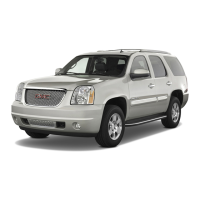
Do you have a question about the GMC 2010 Yukon XL Denali and is the answer not in the manual?
| Brand | GMC |
|---|---|
| Model | 2010 Yukon XL Denali |
| Category | Automobile |
| Language | English |
Overview of the vehicle's primary display and controls.
Brief overview of initial vehicle features and operation.
Highlights various functional features of the vehicle.
Covers vehicle performance aspects and routine maintenance.
Information on proper installation and adjustment of head restraints.
Details on adjusting front seats, including power and lumbar controls.
Information on rear seat features, including folding and heating.
Comprehensive guide on proper safety belt usage and types.
Instructions and guidelines for securing child restraints in the vehicle.
Explanation of airbag types, operation, and safety precautions.
Guidance on inspecting and maintaining restraint systems.
Information on vehicle keys, including ignition and door lock functions.
Details on locking and unlocking vehicle doors using various methods.
Operation and features of the vehicle's power windows.
Explanation of the vehicle's security features.
Guidance on starting the engine and basic vehicle operation.
Information on adjusting and using the manual rearview mirror.
Features and operation of the automatic dimming rearview mirror.
How to adjust and reset the power-folding side mirrors.
How the rear parking assist system detects objects.
Explanation of the system that alerts drivers to vehicles in blind zones.
Information on the rear vision camera system and its operation.
Instructions for operating the universal home remote system.
Step-by-step guide for programming rolling code garage door openers.
Instructions for programming fixed code garage door openers.
How to open, lock, and unlock the glove box.
Location and use of cupholders in various vehicle locations.
How to open and close the instrument panel storage area.
Location and access to the center console compartment.
Guidelines and warnings for using the roof rack system.
Location of the rear storage area and its access.
Use of the convenience net for storing small loads.
Instructions for using and storing the cargo cover.
Procedure for manually opening and closing the sunroof.
Operation of express open/close features for the sunroof.
How to vent the sunroof using the express-vent feature.
Explanation of the sunroof's anti-pinch safety feature.
General overview of the instrument panel layout and controls.
How to operate the hazard warning flashers.
How to sound the vehicle's horn.
Operation of the power tilt steering wheel adjustment.
How to turn the heated steering wheel feature on and off.
Controls for turn signals, headlamps, wipers, and washers.
How to use turn signals for turns and lane changes.
How to switch between high and low beam headlamps.
How to use high-beam headlamps to signal a driver.
Operation of the windshield wipers and speed controls.
How to operate the windshield washer fluid system.
Operation of the rear window wiper and washer.
Information and warnings about using cruise control.
Controls for headlamps, taillamps, parking lamps, and instrument panel lights.
Reminder chime for headlamps left on with ignition off.
Function and conditions for automatic daytime running lamps.
How the automatic headlamp system operates based on light conditions.
Control and operation of the fog lamps.
How to adjust the brightness of the instrument panel lights.
Automatic operation of interior dome lamps when doors are opened.
How to disable or enable the automatic dome lamp function.
Illuminated entry feature operation when doors are opened.
Interior lamps that turn on when the ignition is removed.
Location and operation of front reading lamps.
How the system manages battery charge and voltage.
Feature that prevents battery discharge from interior lamps.
Location and usage of accessory power outlets.
Location and use of the ashtray and cigarette lighter.
Overview of the heating, cooling, and ventilation system.
Detailed operation of the dual zone automatic climate control system.
How to adjust and direct airflow from interior vents.
Control of rear climate system integrated with audio controls.
Explanation of dashboard warning lights and gages.
Diagram and explanation of the instrument panel cluster.
Information on vehicle speed and distance measurement displays.
Explanation of the driver and passenger safety belt reminder system.
Indicates the status of the airbag system's electrical components.
Shows the status of the front passenger airbag system.
Warning light indicating potential issues with the charging system.
Displays the battery's state of charge or charging system condition.
Alerts the driver to potential problems with the brake system.
Indicates a malfunction in the Antilock Brake System.
Shows the status and operation of the StabiliTrak vehicle stability system.
Indicates the engine's operating temperature.
Warns of low tire pressure conditions.
Alerts to issues with the engine, ignition, or emission control systems.
Shows the engine oil pressure when the engine is running.
Indicates low oil pressure and potential engine damage.
Indicates the status of the vehicle's theft-deterrent system.
Indicates when the fog lamps are in use.
Illuminates when the cruise control system is set.
Indicates when the high-beam headlamps are active.
Illuminates when the Tow/Haul mode has been activated.
Shows the amount of fuel remaining in the fuel tank.
Alerts the driver when the fuel level is low.
Displays vehicle information and warning messages.
Principles and techniques for safe driving.
Critical warnings and statistics regarding driving under the influence.
Explanation of systems that help control the vehicle.
Information on braking action, reaction times, and stopping distances.
Description of the ABS system and its operation.
Techniques for effective braking during emergency situations.
Explanation of the vehicle stability enhancement system.
Information on the locking rear axle feature for improved traction.
How the AWD system operates and distributes power.
Guidance on steering techniques, including emergency maneuvers.
Procedures for recovering the vehicle from off-road situations.
Tips for safely passing other vehicles.
What to do when experiencing loss of vehicle control.
Tips and considerations for off-road driving.
Advice for safer driving during nighttime hours.
Precautions and tips for driving in wet conditions.
General guidelines for towing a disabled vehicle.
Information on towing the vehicle for recreational purposes.
Specific towing precautions for AWD vehicles.
Specific towing precautions for 2WD vehicles.
Procedure for towing with front wheels off the ground.
Procedure for towing with rear wheels off the ground.
Information on the Autoride suspension system's interaction with towing.
Essential information and safety rules for towing trailers.
Advice on selecting appropriate trailers and hitches.
Information on obtaining genuine GM parts and GM-trained service.
How non-dealer accessories can affect vehicle performance and warranty.
Guidance and warnings for performing DIY vehicle maintenance.
How external additions can affect airflow, noise, and performance.
Recommendations for using the correct fuel for optimal performance.
Recommended gasoline octane ratings and potential effects of lower octane.
Details on required gasoline specifications and additives.
Information on California emissions standards and fuel.
Guidance on fuel additives and their use.
Information on using E85 fuel and its availability.
Advice on fuel availability when traveling abroad.
Instructions and safety precautions for refueling the vehicle.
Safety guidelines for filling portable fuel containers.
Guidance on checking and maintaining underhood components.
Location and operation of the hood release handle.
Identification of major components in the engine compartment.
Information on checking and adding engine oil.
How the system monitors and indicates oil change needs.
Inspection and replacement of the engine air filter.
Procedures for checking and changing transmission fluid.
Explanation of the engine cooling system and its components.
Information on engine coolant type and checking levels.
Information on tire maintenance, safety, and replacement.
Explanation of information found on the tire sidewall.
Glossary of common tire terms and their meanings.
Proper procedures and importance of maintaining correct tire inflation.
Adjustments for high-speed driving and tire pressure.
How the TPMS works and its safety features.
Explains TPMS malfunction indicators and causes.
Procedure for matching TPMS sensors to wheel positions.
Recommendations for inspecting and rotating tires for even wear.
Indicators and reasons for replacing tires.
Guidance on selecting and purchasing new tires.
Warnings and effects of using non-standard tire and wheel sizes.
Explanation of the UTQG system for tire grading.
Importance and procedure for maintaining wheel alignment and balance.
When and how to replace vehicle wheels.
Step-by-step instructions for safely changing a flat tire.
Location and removal of tools for changing a tire.
Proper procedures for storing tires and tools.
Techniques for cleaning and maintaining the vehicle's interior surfaces.
Methods for cleaning fabric and carpeted areas.
Proper care and cleaning procedures for leather surfaces.
Cleaning guidelines for plastic interior components.
Care instructions for wood trim accents.
How to clean speaker covers without damage.
Proper cleaning and maintenance of safety belts.
Tips for maintaining weatherstrips for better sealing.
Recommended procedures for washing the vehicle's exterior.
How to clean exterior lights and lenses.
Guidelines for maintaining the vehicle's paint finish through waxing and polishing.
Cleaning procedures for glass and wiper blades.
Specific cleaning instructions for aluminum wheels.
Cleaning recommendations for tires.
Information on repairing sheet metal damage.
Repairing chips and scratches on the vehicle's finish.
Procedures for cleaning and maintaining the vehicle's underbody.
Explains damage from airborne pollutants and warranty coverage.
Information on vehicle identification numbers and labels.
Location and significance of the Vehicle Identification Number.
How to identify the vehicle's engine code from the VIN.
Information on the vehicle's electrical components and systems.
Warnings and advice regarding installing aftermarket electrical components.
Information on fuses protecting the windshield wiper motor.
How circuit breakers protect power accessories.
Explanation of how fuses and circuit breakers protect electrical circuits.
Location of the instrument panel fuse block.
Location of the center instrument panel fuse block.
Location of the fuse block in the engine compartment.
Table of approximate vehicle fluid capacities and technical specifications.
Guidelines for regular maintenance based on mileage and time.
Importance of vehicle maintenance for performance and longevity.
Detailed schedule for routine maintenance tasks.
Recommended checks and services the owner can perform.
List of recommended fluids and lubricants for vehicle maintenance.
Part numbers for common maintenance replacement items.
Diagram showing the routing of the engine drive belt.
A log to record scheduled maintenance services performed.
Steps to resolve customer concerns and contact information.
Steps to follow if a concern is not resolved by the dealership.
Accessing vehicle information and services online.
Contact information for TTY users needing assistance.
Contact details for GMC Customer Assistance offices.
Program details for reimbursing adaptive equipment costs.
Information on services provided for vehicle assistance.
Guidance on how to schedule vehicle service appointments.
Information on complimentary transportation options during repairs.
Critical safety reporting procedures to government and manufacturer.
How to report vehicle safety defects to NHTSA.
How to report vehicle safety defects to Transport Canada.
How to report vehicle safety defects directly to General Motors.
How to order service manuals and bulletins.
Explanation of vehicle data recording and privacy policies.
Explanation of the vehicle's Event Data Recorder and its purpose.
Information about the OnStar system and its services.
Details on the vehicle's navigation system features.
Technical information about RFID technology used in the vehicle.
Regulatory statement regarding radio frequency systems.
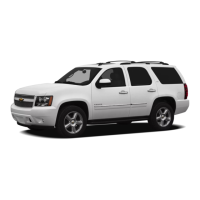
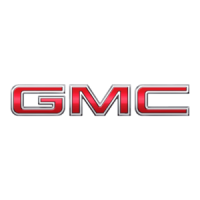
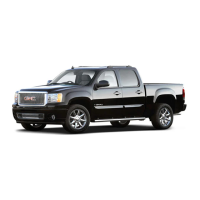
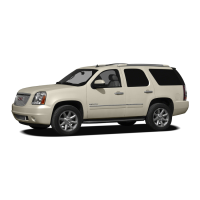
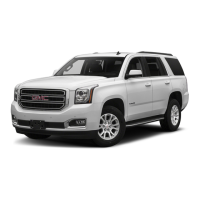
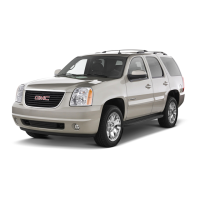
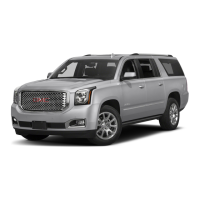
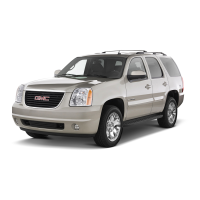

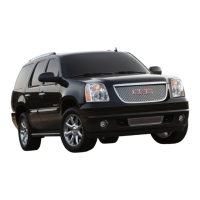
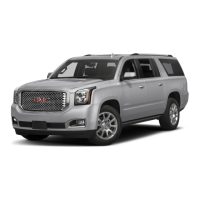
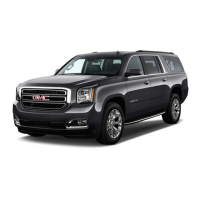
